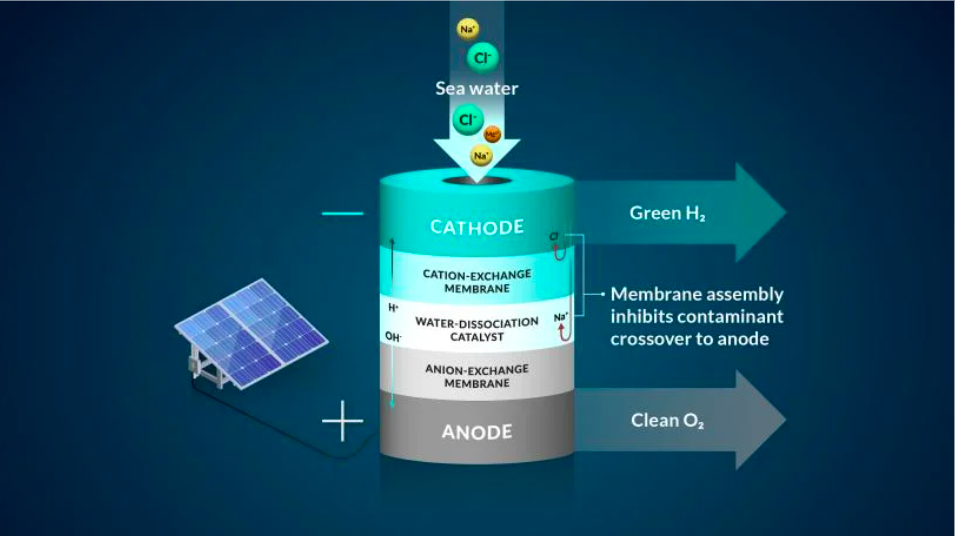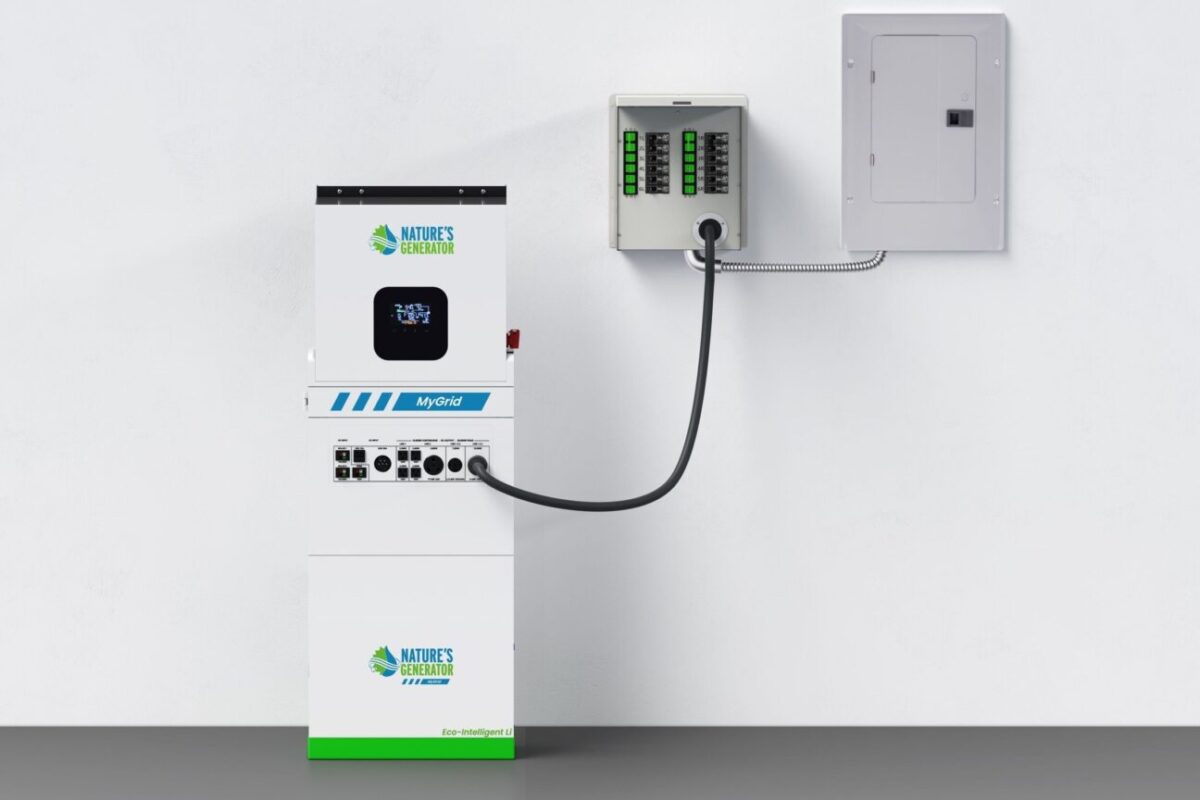A SLAC-Stanford team has produced hydrogen directly from ocean water, funneling it through a double-membrane system. “Many water-to-hydrogen systems today try to use a monolayer or single-layer membrane. Our study brought two layers together,” said Adam Nielander, a researcher at the SLAC-Stanford joint institute. The system mitigates chloride from getting to the anode and oxidizing it. Protons pass through one of the membrane layers to a place where they can be collected and turned into hydrogen gas by interacting with the cathode. The second membrane in the system allows only negative ions, such as chloride, to travel through. One membrane layer contains negative charged groups fixed to the membrane. “The negatively-charged membrane proved to be highly efficient in blocking almost all of the chloride ions in the team’s experiments, and their system operated without generating toxic byproducts like bleach and chlorine,” the SLAC team said.
The Spanish government awarded Swiss startup Destinus grants for two projects worth a total of €26.7 million ($28.94 million). A €12 million grant will go towards demonstrating flights powered by hydrogen in partnership with Spanish engine manufacturer ITPAero. Additionally, the Spanish Institute for Energy Diversification selected Destinus for a new €14.7 million project to demonstrate the feasibility of supersonic flight with hydrogen. “We are currently testing a gaseous hydrogen post-combustion jet engine (afterburner) while working to advance other engine technologies using cryogenic fuels such as liquid hydrogen,” Destinus said. “These technologies will undergo extensive ground testing over the coming year and be integrated onboard our next supersonic prototype, Destinus-3, in 2024.”
Brooge Energy announced that the Technical Concept Study of its green hydrogen and green ammonia plant in Abu Dhabi conducted by thyssenkrupp Uhde has been completed. The Cayman Islands-based company planned to develop the UAE plant in two phases for a total maximum production capacity of 1,950 mtpd green ammonia. The plant, which uses green hydrogen from solar energy for export purposes, is based on thyssenkrupp nucera’s alkaline water electrolysis and thyssenkrupp Uhde ammonia synthesis technologies. “This analysis explored multiple scenarios to identify optimal plant designs coming along with various supporting documentation dealing with technical and execution concepts on a fully integrated approach,” the company said.
The United Kingdom and South Korea have agreed to intensify their collaboration on renewable and nuclear energy. Energy Minister Lee Chang-yang said that “Korea has technological prowess in hydrogen applications, having harnessed it to distribute first-rate hydrogen cars” and that “the UK retains leading technological capabilities in solid polymer electrolysis (SPE) and hydrogen production.”
Hamburg and Schleswig-Holstein have agreed to strengthen their hydrogen collaboration. “We are focusing on the future in the north,” said Schleswig-Holstein Premier Daniel Günther. The two states will jointly push the interests of northern Germany at the federal level, calling the government to connect Hamburg and Schleswig-Holstein at an early stage to the HyPerLink III European hydrogen pipeline network being developed by Gasunie.
Barclay Pearce Capital has announced a joint mandate with The Ince Group to raise pre-IPO capital for hydrogen fuel cell electric vehicle leader H2X Global Limited. The agreement confirms H2X's plans to list on the London Stock Exchange in the next 12 months.
This content is protected by copyright and may not be reused. If you want to cooperate with us and would like to reuse some of our content, please contact: editors@pv-magazine.com.



Ocean water to hydrogen will change all economics of Hydrogen production.
Technology to economize and scale it for mass production and bulk production would be the race for next decade.
Manufacturing Portable Hydrogen plants will permanently change the world.
Rain water harvesting and recycling it for hydrogen production and then using it in hydrogen fuel cell to produce power will solve electrification issues while addressing drinking water solutions in remote hilly villages in Asian and European subcontinent.